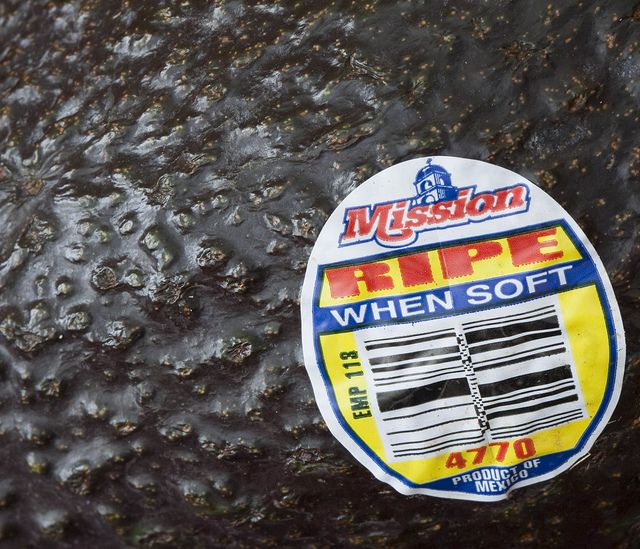Some rights reserved by Dawn Huczek
Am I the only one who stands there for a good 5 minutes squeezing my avocado to determine whether it’s ripe? No? Just me? Too often has my kitchen knife doubled up as a saw as I’ve battled my way into this fruit. Cue the produce sticker. Short of saving my arm muscles a much needed workout with their ‘Ripe!’ shout out, these stickers benefit us in several ways. Not only do they save the cashier that inevitable sigh as they punch in a product code, they also inform the buyer whether what they’re buying is organic, non-organic or genetically modified. For those of us who are conscious about what we eat, these pesky little stickers are enormously important. Pesky because, like the infamous hair band, they always seem to turn up in strangest of places. And if it wasn’t annoying enough having to prise the sticker off your shoe, the place we least want to find it is in our compost heap.
Although produce stickers are largely made from paper, which takes around two to three weeks to biodegrade, the film that coats the surface of these stickers is commonly made from plastic. Plastic is not broken down by bacteria in the earth and so can take up to hundreds, even thousands of years to decompose. So even though a sticker may seem trivial when set against the millions of soda bottles we dispose of, these stickers soon multiply to create a bigger blot on our landfills that leave us in an even ’stickier’ situation.
Our growing concern for the environment is reflected in the packaging industries’ increasing measures to replace these harmful materials with economic and environmental substitutes. For example, environmentally concerned company Water in a Box has found an alternative solution to plastic drinks packaging, by containing their water in the biodegradable material paperboard. Surely then, it is not implausible to create a biodegradable adhesive sticker? Edible ones would also be acceptable. Preferably chocolate flavoured please.
The print and packaging industries are integral to our world. Even if produce stickers aren’t at the top of the to-do list, or even in the middle, they are a constant ‘sticking’ point in our brain that reminds us to look towards our world’s future. It is already encouraging to see these companies come up with innovative methods to contribute to environmental change.
